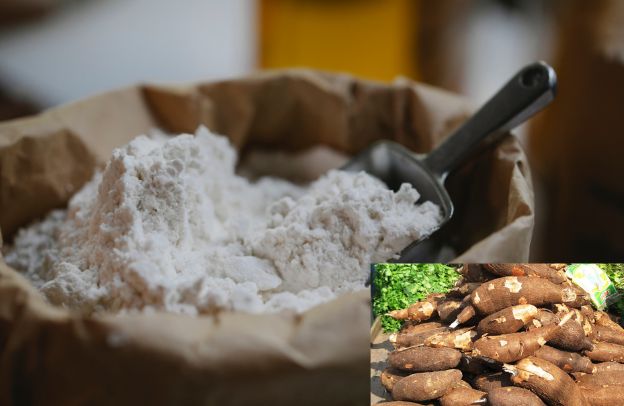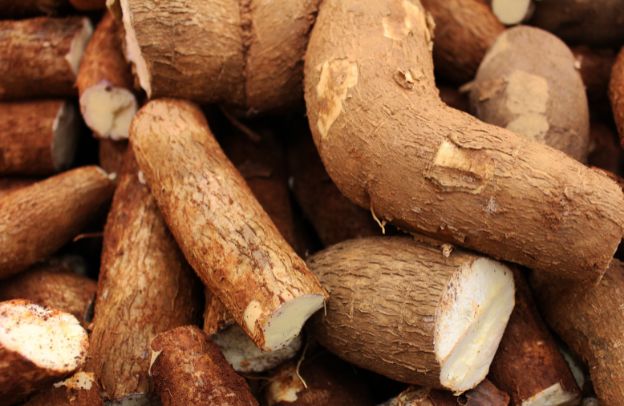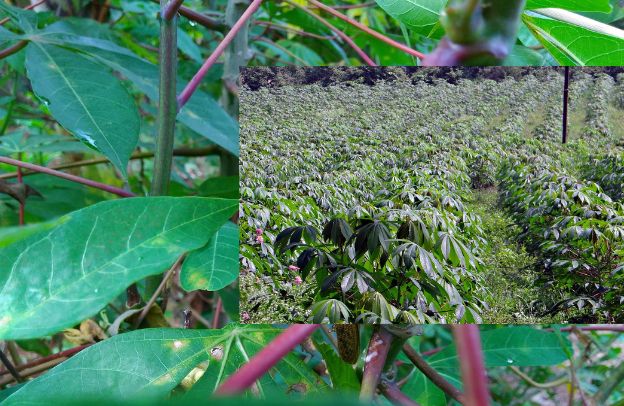How to Use Cassava as Livestock Feed: The Benefits and Challenges

What if one of Africa’s most abundant crops could revolutionize livestock farming, lower feed costs, and strengthen food security—all at once? Across the continent, cassava is primarily known as a staple for human consumption, but forward-thinking entrepreneurs and farmers are now leveraging its potential as a livestock feed. The question is: Can cassava truly compete with conventional feed options like maize and soybeans?
Learn How to Leverage Your Story through our Story To Asset Transformation (S.A.T) Framework.
For African diaspora entrepreneurs looking to invest in Nigeria’s agribusiness, the answer lies in understanding both the opportunities and the challenges. With feed costs making up nearly 70% of total production expenses in poultry and livestock farming, alternative feed sources are crucial.
Cassava presents a compelling case: It is drought-resistant, high-yielding, and locally available in many parts of Africa. However, its use as animal feed is not without challenges—ranging from cyanide toxicity to processing limitations.
This article delves into the economics, benefits, and risks of using cassava as livestock feed, backed by verifiable data and insights from agribusiness experts. If you’re an investor, farmer, or agripreneur in the diaspora seeking innovative opportunities, read on to discover how cassava could redefine Africa’s livestock industry.
The Untapped Potential of Cassava in Livestock Farming
Cassava (Manihot esculenta) is Africa’s second-most cultivated crop after maize, with Nigeria being the world’s largest producer, accounting for over 20% of global cassava output.
Livestock farming in Nigeria presents a significant opportunity for economic growth and food security. By embracing modern, sustainable practices, farmers can enhance animal welfare, boost productivity, and contribute to the country’s agricultural development. The sector also offers numerous promising opportunities:
- Growing Demand: Nigeria’s expanding population increases the need for livestock products like meat, milk, and eggs.
- Export Potential: With abundant livestock resources, Nigeria has the opportunity to tap into both regional and global markets.
- Job Creation: Livestock farming supports job creation across various stages of the value chain, from production to processing.
- Steady Income: Livestock farming can provide a reliable source of income for individuals and families, contributing to economic stability.
These factors make livestock farming a vital sector for Nigeria’s future, with the potential to drive both local prosperity and international trade.
Traditionally, it has been a staple food for millions, processed into garri, fufu, and other derivatives. However, its potential as livestock feed is gaining traction due to its high-energy content and adaptability to various climatic conditions.
Why Cassava for livestock?
Cassava’s suitability as livestock feed lies in its composition:
- Energy-rich: Cassava contains up to 85% carbohydrates, making it an excellent energy source, especially for poultry and pigs.
- High yield: Compared to maize, cassava produces more calories per hectare, making it a cost-effective alternative.
- Drought-resistant: Unlike maize and other feed grains that struggle in arid conditions, cassava thrives with minimal rainfall.
- Locally available: With Nigeria producing over 60 million metric tons annually (International Institute of Tropical Agriculture, 2023), cassava offers a sustainable feed solution without relying on costly imports.
Despite these advantages, cassava cannot be used directly as livestock feed without proper processing, as raw cassava contains cyanogenic glycosides that can release toxic cyanide.
See also: 11 Industrial Uses Of Cassava You Didn’t Know Of
Nutritional Benefits and Processing Methods
Before incorporating cassava into livestock diets, it’s essential to understand its nutritional value and safe processing techniques.
Nutritional Breakdown of Cassava for Livestock
Cassava serves as a valuable energy source, but it lacks protein. According to a study by the Food and Agriculture Organization (FAO, 2022), cassava tubers contain:
- Carbohydrates: 70–85%
- Crude protein: 1–3% (much lower than maize, which has 8–10%)
- Fiber: 3–5%
- Fat: Less than 1%
Due to its low protein content, cassava must be supplemented with protein-rich feed ingredients such as soybean meal, groundnut cake, or fishmeal.
Processing Cassava for Safe Animal Feed
To reduce cyanide levels and improve digestibility, cassava must undergo one or more of the following treatments:
- Drying: Sun-drying cassava chips for several days significantly lowers cyanide content.
- Fermentation: Traditional fermentation, such as in gari production, helps detoxify cassava before feeding it to animals.
- Boiling: Cooking cassava roots before feeding eliminates cyanogenic compounds.
- Pelleting: Industrial processing into pellets ensures uniform quality and enhances digestibility for poultry and pigs.
Each method affects the nutritional composition, cost, and ease of storage, making it crucial for farmers to choose the most suitable option based on their livestock needs.
See also: What Are the Benefits of Cassava?
Economic and Environmental Benefits
With the rising costs of conventional feed ingredients like maize and soybeans, cassava offers a lower-cost alternative. According to the Nigerian Institute of Animal Science (NIAS, 2023), substituting 30–50% of maize in poultry feed with cassava can reduce feeding costs by up to 25%. This translates into significant savings for farmers, especially those managing large-scale operations.
Reducing Dependence on Imported Grains
Nigeria currently spends billions on importing maize and wheat for livestock feed, increasing vulnerability to global price fluctuations. By utilizing cassava, the country can reduce its reliance on imports, strengthen local agribusiness, and create jobs in processing and distribution.
Sustainability and Climate Resilience
Cassava’s adaptability to poor soils and drought conditions makes it a strategic crop for sustainable livestock farming. Unlike maize, which requires significant water input, cassava thrives in semi-arid environments, making it an ideal choice for climate-resilient agriculture.
See also: How To Use Cassava As Livestock Feed: The Benefits And Challenges
Challenges and Risks of Using Cassava as Livestock Feed
While cassava offers numerous benefits, it is not a silver bullet. Several challenges must be addressed for its widespread adoption as livestock feed.
- Cyanide Toxicity: The presence of cyanogenic glycosides in raw cassava is a major concern. If not processed properly, cyanide poisoning can lead to reduced animal growth rates, organ damage, or even death. The FAO recommends that cassava intended for livestock feed be dried or fermented to reduce cyanide levels to safe limits.
- Low Protein Content: Cassava’s low protein levels mean it cannot fully replace maize or soybean meal in animal diets. Farmers must supplement it with high-protein sources, which may increase overall feed costs.
- Storage and Shelf Life: Cassava has a high moisture content, making it prone to spoilage if not processed quickly. Unlike grains like maize, cassava requires additional drying and storage infrastructure, which may be a barrier for small-scale farmers.
- Limited Awareness and Adoption: Despite its potential, many farmers are unaware of how to process and incorporate cassava into animal feed safely. Training programs, extension services, and government policies are needed to drive adoption.
Strategies to Overcome These Challenges
To unlock the full potential of cassava as a livestock feed, targeted strategies are essential. By addressing key challenges and implementing focused interventions, we can enhance its quality, availability, and acceptance in the agricultural sector. Here are some strategies that can make a significant impact:
- Investment in Processing Infrastructure – Establishing cassava drying and pelletizing plants can improve feed quality and storage.
- Government Support and Policy Development – Subsidies for cassava-based feed production can encourage adoption and make it more competitive with conventional feeds.
- Education and Training for Farmers – Capacity-building programs on cassava processing and feed formulation will drive wider acceptance.
- Research and Development – Breeding cassava varieties with lower cyanide content and higher protein levels can improve their nutritional profile.
Several African research institutions, including the International Institute of Tropical Agriculture (IITA), are already working on improved cassava varieties tailored for livestock feed.
The Road Ahead: Opportunities for African Diaspora Entrepreneurs
For African diaspora entrepreneurs looking to invest in Nigeria’s agribusiness, cassava-based livestock feed presents a promising opportunity. The Nigerian government has identified livestock production as a priority sector under its Agriculture Promotion Policy (APP), aiming to boost local feed production and reduce reliance on imports.
How You Can Get Involved
- Processing and Supply Chain Investment: Set up cassava drying and feed processing plants to bridge the gap in supply.
- Export Opportunities: Cassava-based feed products can be exported to other African countries facing similar feed shortages.
- Partnerships with Local Farmers: Creating out-grower schemes to supply cassava for feed production can strengthen value chains and create jobs.
With Nigeria’s agribusiness sector projected to reach $1 trillion by 2030 (AfDB, 2022), investing in cassava-based feed solutions aligns with broader goals of food security and economic growth.
Conclusion on How to Use Cassava as Livestock Feed
Cassava’s potential as livestock feed is undeniable. It offers a cost-effective, locally available, and climate-resilient alternative to traditional feed sources. However, its widespread adoption requires strategic investment in processing, education, and policy support.
For African diaspora entrepreneurs seeking impactful agribusiness ventures, cassava-based livestock feed presents a unique opportunity to drive food security, create jobs, and support Nigeria’s growing livestock sector.
The future of African agribusiness is not just about production—it’s about innovation. And cassava may be the key to unlocking the next frontier. Learn How to Leverage Your Story through our Story To Asset Transformation (S.A.T) Framework.






